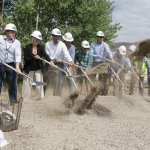Romer: Exploring Eagle County’s workforce challenges
The Vail Daily recently asked: “Has it ever been tougher to find employees in Eagle County?” The short answer to the above question: probably not.
We hear every day from our member companies — of every size, across town boundaries, from every industry — that they’re facing unprecedented challenges trying to find workers to fill jobs. Let’s explore a bit to better understand the workforce constraints facing Eagle County.
The most critical and widespread challenge facing businesses right now is the inability to hire the qualified workers they need. When businesses do not have enough employees, they are forced to reduce hours, scale down their operations, and in the worst cases, permanently close. It is not just a local problem in Colorado’s resort communities.
The latest data and surveys reveal a local and national workforce availability crisis that is getting steadily worse. But just how widespread is this problem? And what can be done to address the problem?
Consider the trends:

Support Local Journalism
- There were 8.1 million vacant job openings in the United States — a record high — in March 2021, the latest month for which data is available. That’s up more than 600,000 from February. In Eagle County, just short of 4,000 jobs are open.
- There are approximately half as many available workers for every open job (1.4 available workers per opening) across the country as there have been on average over the past 20 years (2.8 historical average) — and the ratio continues to fall. In Eagle County, we have two jobs for every one worker looking.
- In several states and several industries, including hard-hit sectors like education and health services as well as professional and business services, there are currently fewer available workers than the total number of jobs open. In Eagle County, there is a severe skills gap between many open jobs and those looking for work.
- More than 90% of industry association economists say employers in their sectors are struggling to find qualified workers for open jobs.
Nationwide data paints a broad economic picture and provides a foundation that outlines the local challenges, but don’t necessarily directly apply to our rural resort economy. The national statistics show that we are not unique — note 90% of industry associations indicate their members are struggling to find qualified workers.
The national workforce challenges are exasperated in our resort community due in large part to a lack of workforce housing and talent retention due to high costs of living. Workforce and affordable housing has long been an issue in Eagle County.
The difference today is the clearly defined need for more affordable housing options for the current and future Eagle County workforce. Addressing our affordable housing issue is essential to the continued sustainability of our business community across industry sectors.
Eagle County deserves kudos and recognition for dedicating significant financial support to addressing our workforce housing issues. Investing up to $10 million in various programs — deed restrictions, down payment assistance, land purchases while also improving the development review process will help increase our inventory of housing for our workforce.
In addition to addressing housing — via funding and policy — we must focus on workforce development and our talent pipeline. The demand for skilled workers across industry sectors requires a concerted community approach to workforce development efforts. Workforce development and talent retention is important to ensuring a thriving community now and into the future.
We are facing a talent deficit of two jobs for every unemployed community member. Addressing our housing and workforce issues will require a continued investment of both funding and political capital. It’s long overdue, and I’m proud of the steps our community is taking.
Chris Romer is president and CEO of Vail Valley Partnership, the regional chamber of commerce. Learn more at VailValleyPartnership.com.











